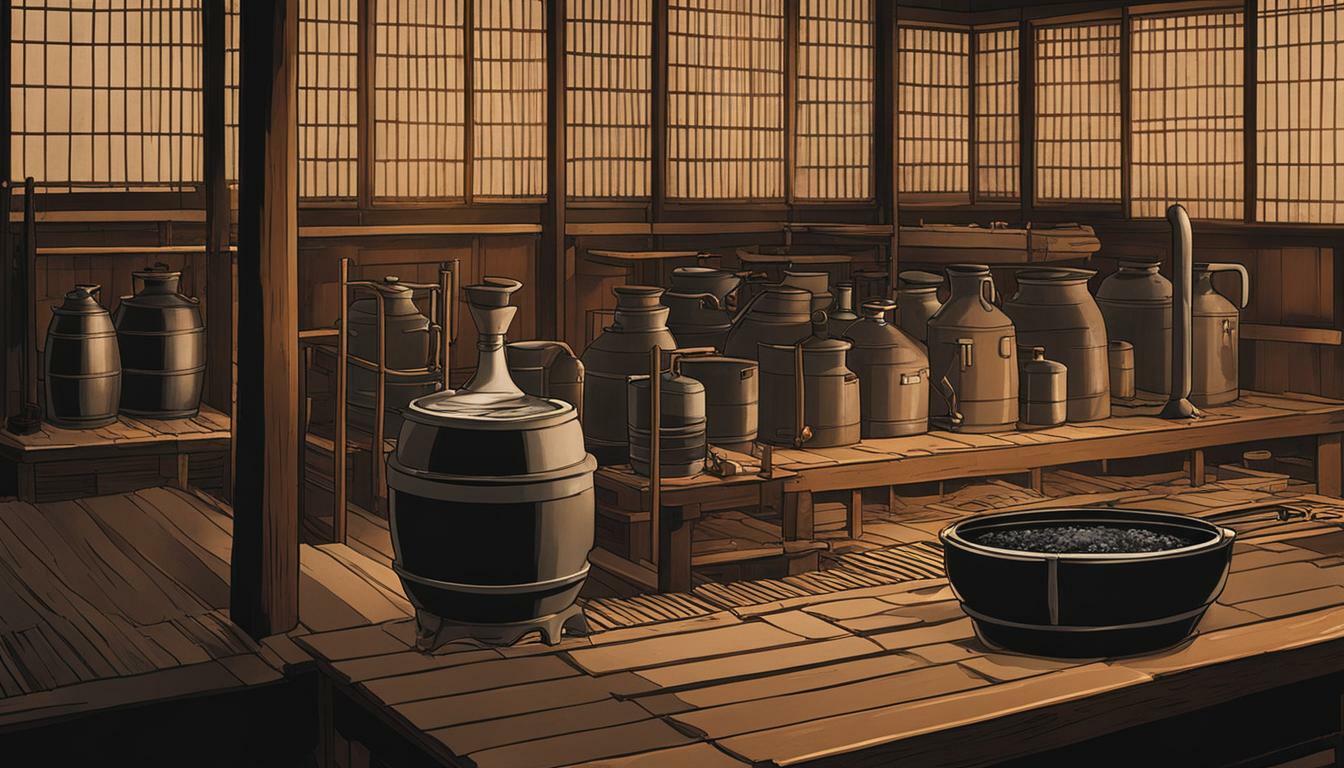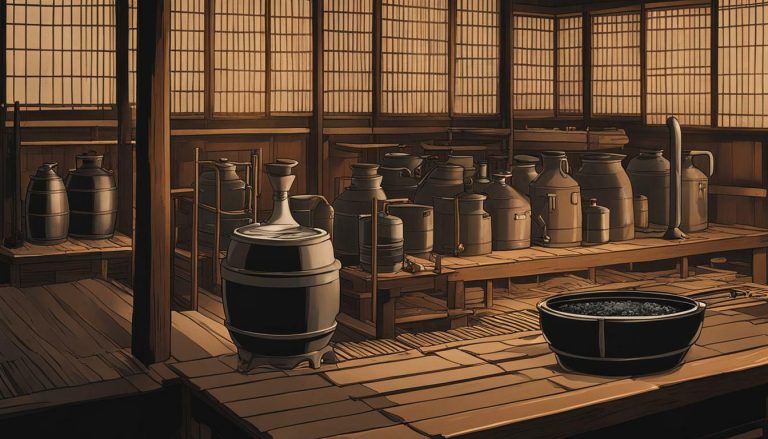Exploring the Flavor Profile: Is Shochu Sweet?
Shochu, a beloved Japanese distilled spirit, offers a rich and complex flavor profile that begs the question – is it sweet? Shochu comes in various flavors depending on the base ingredients used, and one popular variety known for its sweet flavor and distinct aroma is sweet potato shochu, or imo shochu. Different varieties of sweet potatoes, such as yellow, white, purple, and orange, contribute to the unique flavor profiles found in shochu. Additionally, base ingredients like barley and rice also play a role in shaping the taste of this intriguing spirit.
The distillation method used in the production of shochu further impacts its flavor. Atmospheric distillation, for example, creates a fuller flavor profile, while reduced pressure distillation yields a lighter and more floral taste. Furthermore, aging shochu can enhance its flavors, with aged varieties often developing a delightful, vanilla-like note.
Overall, shochu offers a rich and dynamic flavor experience. It can be enjoyed in various ways, such as savoring it neat, on the rocks, or incorporating it into cocktails. The sweetness and smoothness of imo shochu make it a versatile and enjoyable spirit that is cherished by enthusiasts around the world.
Key Takeaways:
- Shochu is a Japanese distilled spirit with a complex flavor profile.
- Sweet potato shochu, or imo shochu, is known for its sweet flavor and unique aroma.
- Base ingredients like sweet potatoes, barley, and rice contribute to the flavor of shochu.
- The distillation method, atmospheric or reduced pressure, affects the taste of shochu.
- Aging can enhance the flavor of shochu, with aged varieties developing a vanilla-like note.
Understanding Shochu: A Brief Introduction
To better understand whether shochu is sweet, let’s start with a brief introduction to this iconic Japanese spirit. Shochu is a traditional distilled beverage that has been enjoyed in Japan for centuries. It is often referred to as a “shochu spirit” and is deeply rooted in Japanese culture and tradition.
Shochu is made through a meticulous process of fermentation and distillation, resulting in a spirit that typically has an alcohol content between 25% and 45% ABV (alcohol by volume). It is known for its clear, colorless appearance and its wide range of flavor profiles, which can vary based on the base ingredients used.
The term “shochu” itself is derived from the Japanese words “sho” meaning “burning” and “chu” meaning “alcohol,” reflecting its method of production. Unlike sake, which is brewed like beer, shochu is distilled like whiskey or vodka. While it is often compared to other spirits like vodka or soju, shochu has its own unique characteristics that make it stand out.
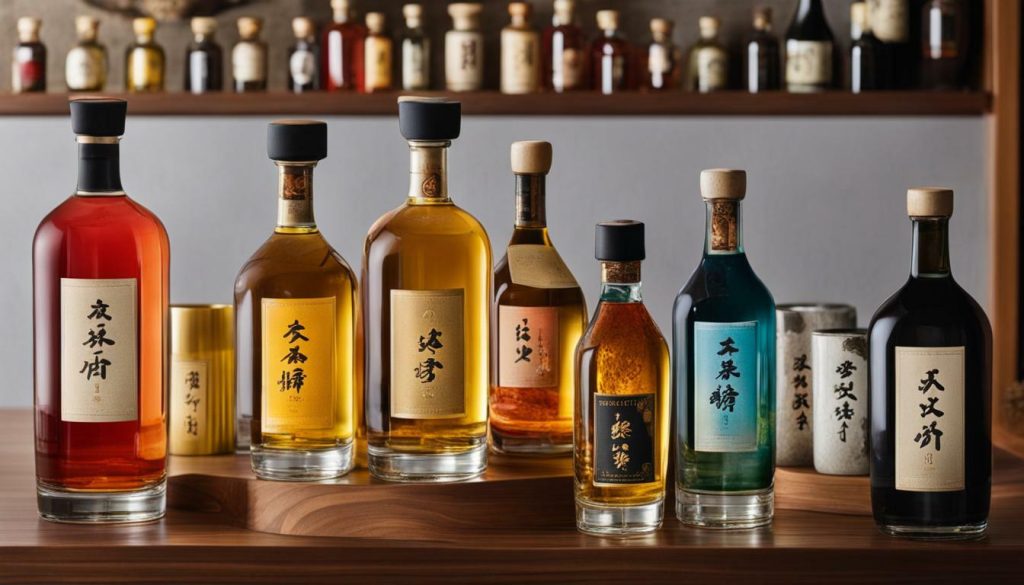
Shochu can be made from a variety of base ingredients, including sweet potatoes, barley, rice, buckwheat, and more. Each of these ingredients imparts a distinct flavor profile to the finished shochu. For example, sweet potato shochu, also known as imo shochu, is known for its sweet flavor and unique aroma. Different varieties of sweet potatoes, such as yellow, white, purple, and orange, contribute to the diverse range of flavors found in imo shochu.
In addition to the base ingredients, the method of distillation also plays a role in the flavor of shochu. Atmospheric distillation, which is the traditional method, produces a fuller and richer flavor. On the other hand, reduced pressure distillation results in a lighter and more floral profile. Some shochu producers even combine these two methods to create a well-balanced spirit with complex flavors.
Key Takeaways:
- Shochu is a traditional Japanese distilled spirit with a wide range of flavor profiles.
- It is made through a process of fermentation and distillation, resulting in a clear, colorless spirit.
- Shochu can be made from various base ingredients, such as sweet potatoes, barley, and rice.
- The distillation method used, atmospheric or reduced pressure, affects the flavor of the shochu.
- Understanding the base ingredients and distillation methods can help in determining whether shochu is sweet.
| Base Ingredient | Flavor Profile |
|---|---|
| Sweet Potatoes | Sweet, unique aroma |
| Barley | Clean, crisp |
| Rice | Light, delicate |
| Buckwheat | Earty, nutty |
Shochu is a versatile spirit that can be enjoyed neat, on the rocks, or mixed into cocktails. Its distinct flavors and cultural significance make it an exciting choice for those looking to explore the world of Japanese distilled spirits.
Exploring Shochu Flavors: The Influence of Base Ingredients
The flavor of shochu is greatly influenced by the base ingredients used, so let’s explore how different ingredients contribute to its distinctive taste. Shochu, a Japanese distilled spirit, can be made from a variety of ingredients, including sweet potatoes, barley, rice, and more. Each ingredient brings its unique characteristics, resulting in a diverse range of flavors and aromas.
Sweet Potato Shochu: A Delightfully Sweet Variety
One popular variety of shochu is sweet potato shochu, also known as imo shochu. It is cherished for its sweet flavor and distinct aroma. Different varieties of sweet potatoes, such as yellow, white, purple, and orange, are used in the production of imo shochu, each contributing to its unique taste profile. The yellow sweet potatoes deliver a mellow sweetness, while the purple ones add a deeper, earthy flavor. The white sweet potatoes bring a delicate and subtly sweet note, and the orange ones contribute a vibrant, fruity essence.
Other Base Ingredients: Barley and Rice
In addition to sweet potatoes, shochu can be made from other base ingredients like barley and rice. Barley-based shochu, known as mugi shochu, has a light and crisp flavor with subtle roasted notes. Rice-based shochu, known as kome shochu, offers a clean and smooth taste with a hint of sweetness. Each base ingredient imparts its characteristics, adding complexity and variety to the shochu experience.
| Base Ingredient | Taste Profile |
|---|---|
| Sweet Potatoes (Yellow) | Mellow sweetness |
| Sweet Potatoes (Purple) | Deeper, earthy flavor |
| Sweet Potatoes (White) | Delicate, subtly sweet |
| Sweet Potatoes (Orange) | Vibrant, fruity essence |
| Barley | Light, crisp with roasted notes |
| Rice | Clean, smooth with a hint of sweetness |
The combination of these base ingredients, along with the distillation process and aging, ultimately creates the wide-ranging flavor profiles found in shochu. Whether you prefer the sweetness of imo shochu, the crispness of mugi shochu, or the smoothness of kome shochu, there is a shochu variety to suit every palate.
Remember to explore the rich world of shochu and discover your favorite flavor by experimenting with different types and enjoying it in various ways – neat, on the rocks, or mixed into refreshing cocktails. Cheers to the fascinating flavors of shochu!
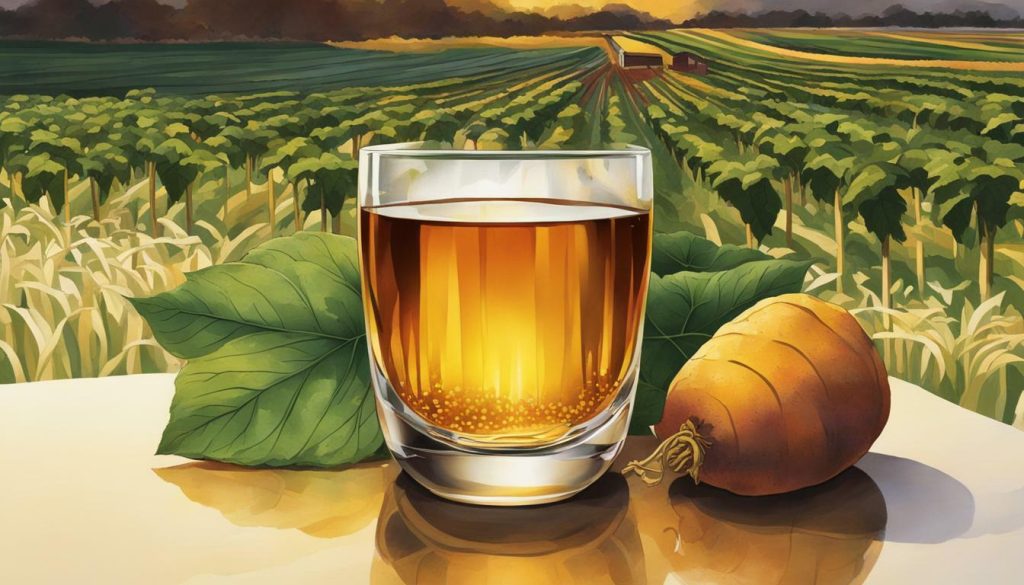
Among the various types of shochu, sweet potato shochu stands out with its delightful sweetness and intriguing character. Made from different varieties of sweet potatoes, such as yellow, white, purple, and orange, this unique spirit offers a wide range of flavor profiles that captivate the palate. Each type of sweet potato contributes to the distinct taste of the shochu, resulting in a drink that is both rich and flavorful.
One of the fascinating aspects of sweet potato shochu is its versatility in terms of aroma and taste. Depending on the variety of sweet potato used, the shochu can offer notes of caramel, honey, or even tropical fruits. The sweetness is well-balanced, creating a smooth and enjoyable drinking experience.
The production process of sweet potato shochu involves mashing and fermenting the sweet potatoes, followed by distillation. The result is a spirit that retains the essence of the base ingredient while developing complex flavors during the aging process. Aged sweet potato shochu can exhibit a pleasant vanilla-like taste, adding depth to the overall flavor profile.
| Variety of Sweet Potato | Flavor Profile |
|---|---|
| Yellow Sweet Potato | Rich and earthy with hints of honey |
| White Sweet Potato | Light and crisp with subtle sweetness |
| Purple Sweet Potato | Smooth and mellow with a gentle sweetness |
| Orange Sweet Potato | Fruity and aromatic with a touch of sweetness |
Whether enjoyed neat, on the rocks, or mixed into cocktails, sweet potato shochu offers a versatile and exciting drinking experience. Its delightful sweetness, coupled with the smoothness of the spirit, makes it a popular choice among shochu enthusiasts. So why not savor the unique flavors and aromas of sweet potato shochu and embark on a delightful journey of taste?
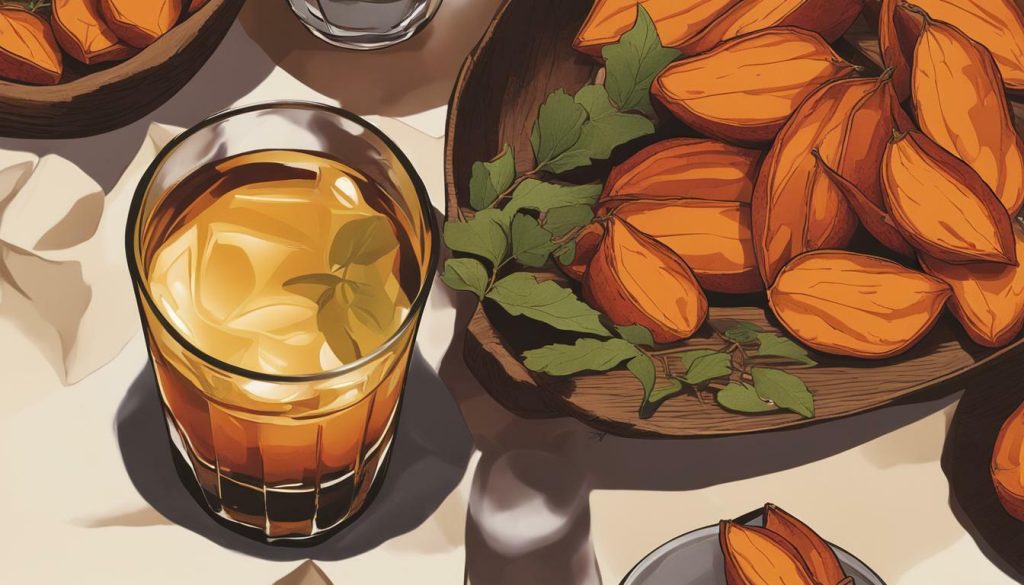
Distillation Methods and Flavor: Atmospheric vs. Reduced Pressure
The distillation process plays a crucial role in shaping the flavor of shochu – let’s examine the impact of atmospheric and reduced pressure distillation methods. Atmospheric distillation, also known as atmospheric pressure distillation, is the traditional method used in shochu production. It involves heating the fermented mash in a pot still, allowing the liquid to boil and evaporate. The vapor rises and is then condensed, resulting in a fuller flavor with richer aromatic compounds. The atmospheric distillation method is known for producing shochu with a robust and complex taste.

On the other hand, reduced pressure distillation is a more modern approach that involves creating a vacuum within the distillation equipment. This lowers the boiling point of the liquid, allowing for gentler and more controlled evaporation. Reduced pressure distillation often results in a lighter and more floral flavor profile, with a smoother finish. This method is favored for producing shochu with a delicate and elegant taste.
Both atmospheric and reduced pressure distillation methods have their merits and can produce exceptional shochu. The choice of distillation method depends on the desired flavor profile and characteristics that the distiller aims to achieve. Now, let’s take a closer look at how the base ingredients and aging process further influence the flavor of shochu.
Aging Shochu: Enhancing the Flavor
Just like fine wine or spirits, aging shochu can result in a flavor transformation, offering a more nuanced and mature tasting experience. As shochu ages, it develops a richness and complexity that adds depth to its flavor profile. The aging process allows the spirit to interact with the wooden casks, absorbing unique characteristics and flavors.
During aging, shochu undergoes subtle changes in aroma, taste, and texture. The spirit takes on notes of oak, caramel, and vanilla, creating a smoother and more refined drinking experience. The length of aging time can vary, with some shochu aged for just a few months, while others are aged for several years to achieve deeper flavors.
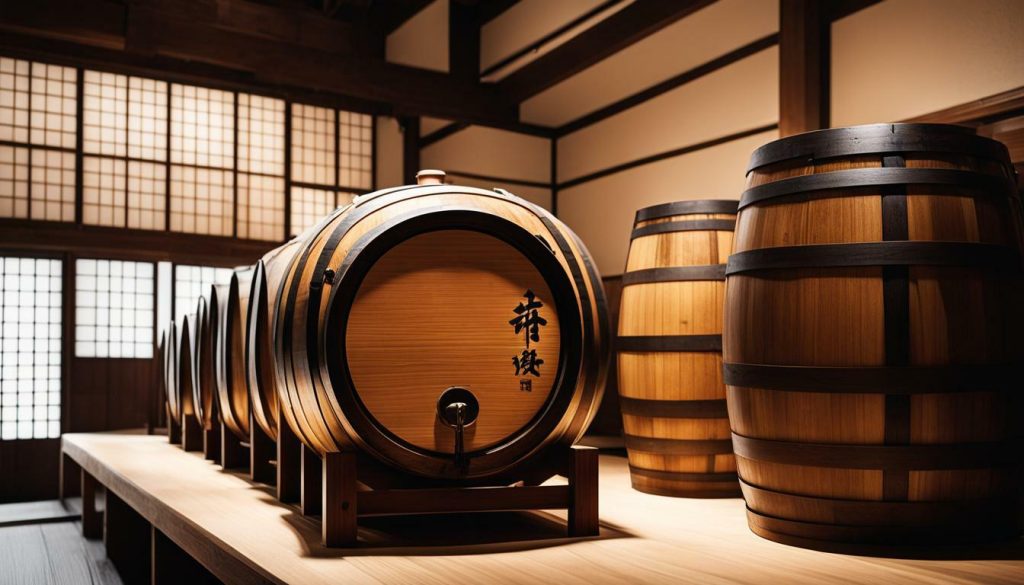
The type of cask used for aging also plays a significant role in shaping the flavor of shochu. Commonly, shochu is aged in oak barrels, which impart distinct flavors and aromas to the spirit. The charred inner surface of the barrel contributes to a unique smokiness and enhances the overall complexity. Different types of oak, such as American oak or Japanese Mizunara oak, can yield varying flavor profiles.
Aged shochu is often enjoyed neat or on the rocks, allowing the intricate flavors to be savored without dilution. The natural sweetness and smoothness of aged shochu make it a delightful sipping spirit. Additionally, the complex flavors of aged shochu lend themselves well to being incorporated into cocktails, adding depth and sophistication to traditional recipes.
| Type of Shochu | Aging Time | Flavor Profile |
|---|---|---|
| Barley Shochu | 6 months to 3 years | Nutty and earthy notes with a hint of sweetness |
| Sweet Potato Shochu | 1 year to 10 years | Smooth and caramel-like with a subtle sweetness |
| Rice Shochu | 1 year to 10 years | Delicate and floral, with a gentle sweetness |
Overall, aging shochu is a process that enhances its flavors and creates a more enjoyable drinking experience. Whether sipped neat or mixed into cocktails, aged shochu offers a complexity and depth that can be appreciated by discerning palates. So, next time you enjoy a glass of shochu, consider trying an aged variety and discover the remarkable flavors that time can bring.
Enjoying Shochu: Versatile and Exciting
Whether you prefer to sip it neat, on the rocks, or mixed into inventive cocktails, shochu promises a versatile and exciting drinking experience. This Japanese distilled spirit offers a wide range of flavors and can be enjoyed in various ways to suit different tastes and occasions.
One popular way to enjoy shochu is to savor it neat, allowing the complexity of flavors to shine through. The smoothness and depth of the spirit can be fully appreciated when enjoyed on its own. Whether you’re sipping on a sweet potato shochu with its unique aroma or exploring the rich flavors of barley or rice-based shochu, drinking it neat allows you to savor the full spectrum of taste profiles.
If you prefer a refreshing and cooling effect, trying shochu on the rocks can be a delightful choice. The addition of ice not only chills the spirit but also subtly dilutes it, providing a lighter and more refreshing taste. This method is particularly enjoyable during hot summer months or when seeking a lighter, more refreshing drinking experience.
For those who enjoy mixing drinks, shochu can be a versatile base for inventive cocktails. Its unique flavors can complement a variety of mixers and ingredients, allowing you to create personalized concoctions. Try experimenting with different fruits, herbs, and syrups to bring out the best in your shochu and create a truly unique and exciting cocktail experience.

| Cocktail Name | Ingredients | Garnish |
|---|---|---|
| Sweet Potato Sour | – 2 oz sweet potato shochu – 1 oz lemon juice – 0.5 oz simple syrup – 1 egg white |
Lemon peel |
| Yuzu Sparkler | – 2 oz yuzu-infused shochu – 0.5 oz yuzu juice – 0.5 oz honey syrup – Soda water |
Lemon slice |
| Green Tea Highball | – 2 oz barley shochu – 1 oz green tea – 0.5 oz ginger syrup – Soda water |
Mint sprig |
As you can see, shochu provides endless possibilities for creative and delicious cocktails. Explore different flavor combinations and discover your own signature shochu-based drink. Whether enjoyed neat, on the rocks, or mixed into cocktails, the versatility and exciting flavors of shochu are sure to impress.
Conclusion
In conclusion, shochu offers a rich and varied flavor profile, but whether it is sweet or not ultimately depends on the specific type and ingredients used. This Japanese distilled spirit is known for its versatility and ability to showcase the unique characteristics of its base ingredients.
Sweet potato shochu, also known as imo shochu, is a popular variety that stands out for its sweet flavor and distinct aroma. The use of different varieties of sweet potatoes, such as yellow, white, purple, and orange, contributes to the diverse flavor profiles found in imo shochu.
Furthermore, the distillation method employed in the production of shochu also plays a significant role in its taste. Atmospheric distillation results in a fuller flavor, while reduced pressure distillation creates a lighter and more floral profile.
Aging shochu can further enhance its flavors, with aged varieties often developing a delightful vanilla-like taste. This aging process adds depth and complexity to the spirit, making it even more enjoyable to those who appreciate its nuanced flavors.
Whether you prefer to enjoy shochu neat, on the rocks, or mixed into cocktails, its sweetness and smoothness make it a versatile and delightful spirit for any occasion. So go ahead, explore the world of shochu and discover the flavor profile that suits your palate.
FAQ
Is shochu sweet?
Shochu can have a sweet flavor depending on the base ingredients used and the distillation method. Sweet potato shochu, also known as imo shochu, is one popular variety known for its sweet taste and distinct aroma. Different varieties of sweet potatoes produce different flavor profiles in the shochu. However, there are also other types of shochu that may have different flavor characteristics, depending on the base ingredients and production method used.
What is shochu and what does it mean in Japanese?
Shochu is a Japanese distilled spirit. The word “shochu” in Japanese refers to any type of distilled liquor. It is typically made from ingredients such as sweet potatoes, barley, rice, or other grains. Shochu is often enjoyed as a traditional Japanese alcoholic beverage and is known for its unique flavors and versatility.
How do different base ingredients influence the flavor of shochu?
The base ingredients used in shochu production have a significant impact on its flavor profile. Sweet potato shochu, made from different varieties of sweet potatoes such as yellow, white, purple, and orange, can result in various flavor profiles. Other base ingredients like barley and rice also contribute to the overall taste of the shochu. The choice of base ingredient can greatly affect the sweetness, aroma, and complexity of the final product.
What is the difference between atmospheric and reduced pressure distillation in shochu production?
Atmospheric distillation and reduced pressure distillation are two different methods used in shochu production that affect the flavor. Atmospheric distillation generally produces a fuller flavor, while reduced pressure distillation results in a lighter and more floral profile. The choice of distillation method can influence the overall taste and character of the shochu.
Does aging shochu enhance its flavor?
Yes, aging shochu can enhance its flavor. Aged shochu develops a more complex and intensified taste, with some varieties even acquiring a vanilla-like flavor. The aging process allows the shochu to mellow and develop new aroma and taste characteristics, making it a unique and enjoyable spirit.
How can shochu be enjoyed?
Shochu can be enjoyed in various ways. It can be consumed neat, on the rocks, or mixed into cocktails. The versatility of shochu allows for a range of creative drink options, making it an exciting choice for cocktail enthusiasts. Whether sipped on its own or used as a base for mixed drinks, shochu offers a delightful and versatile drinking experience.


